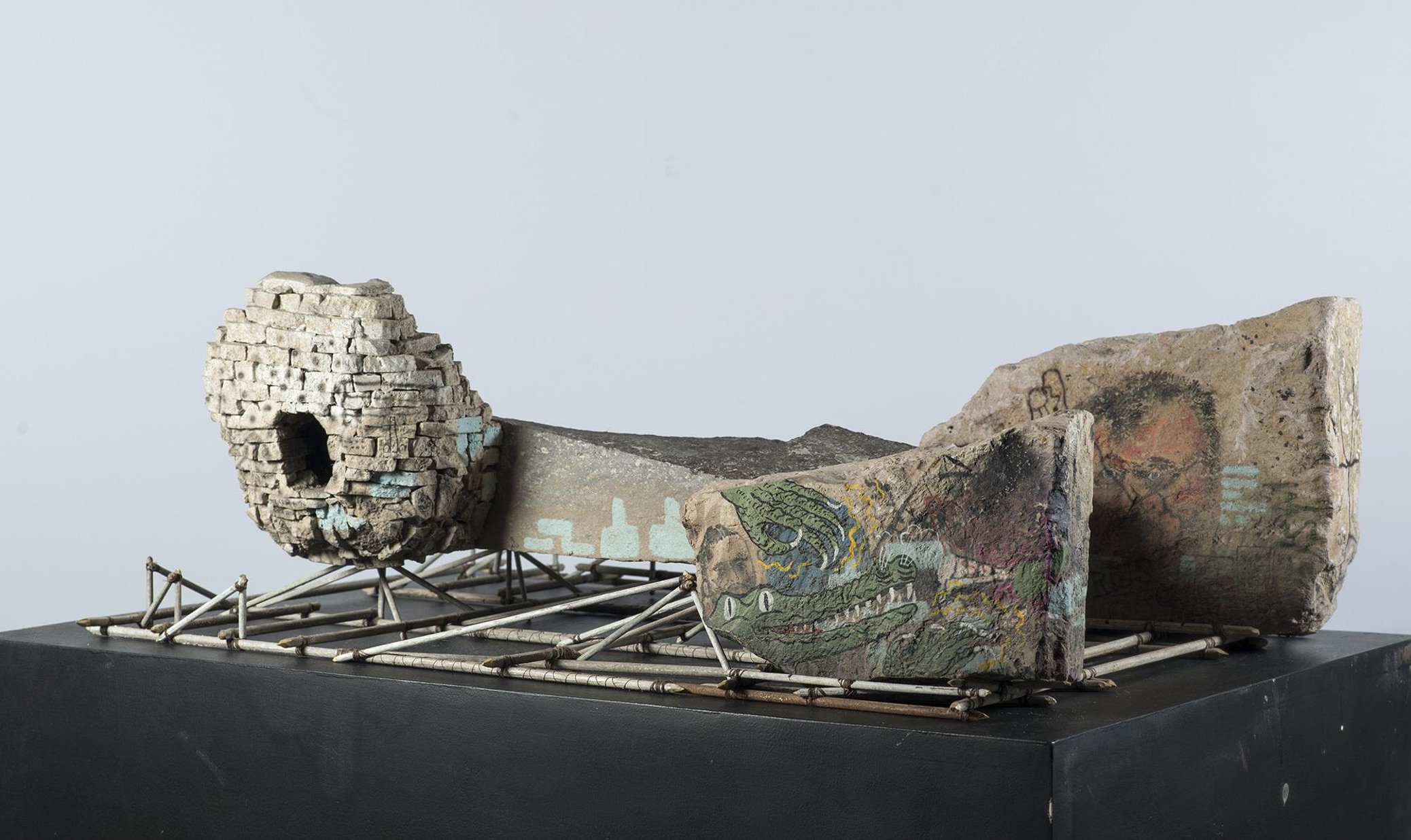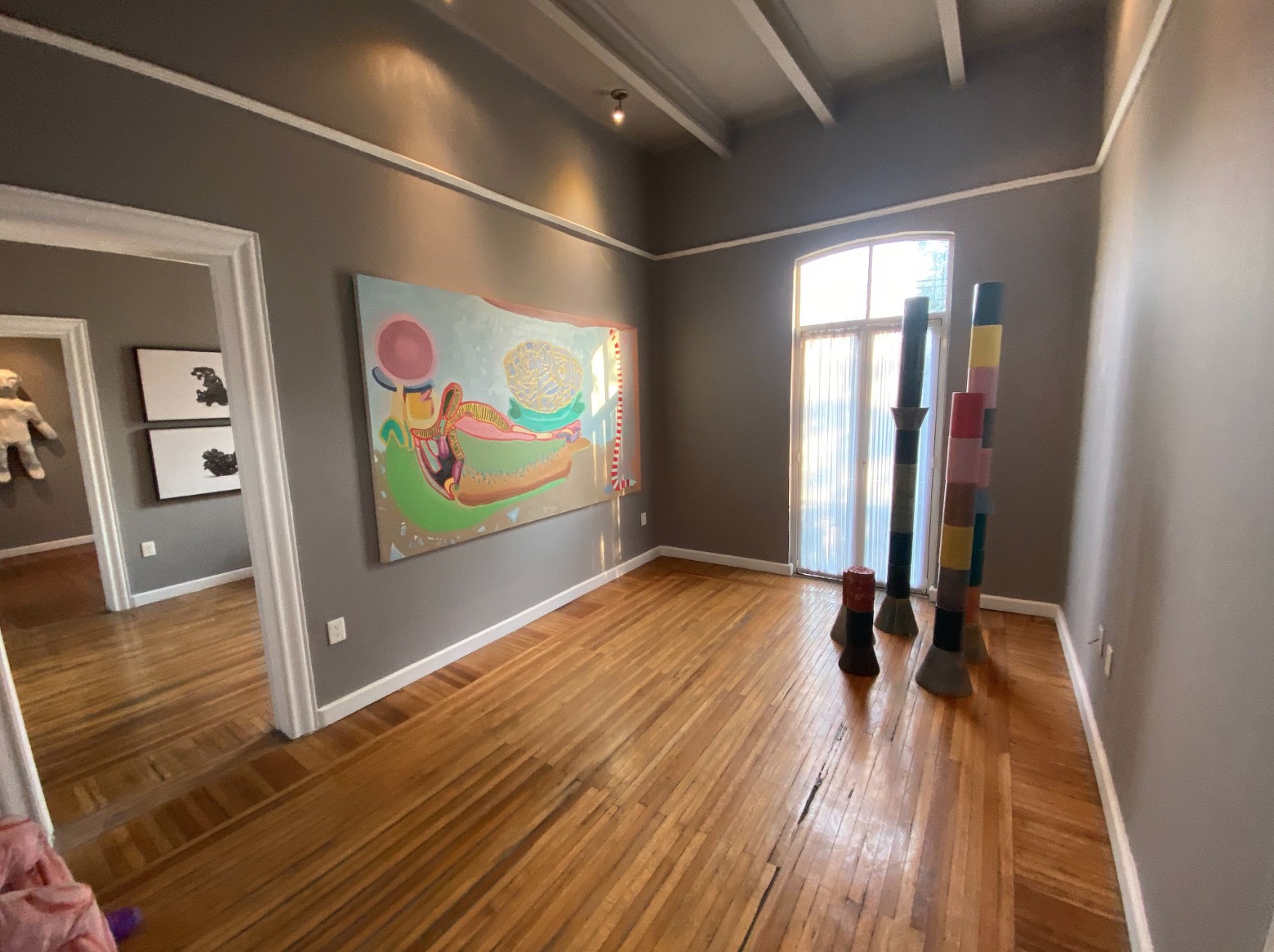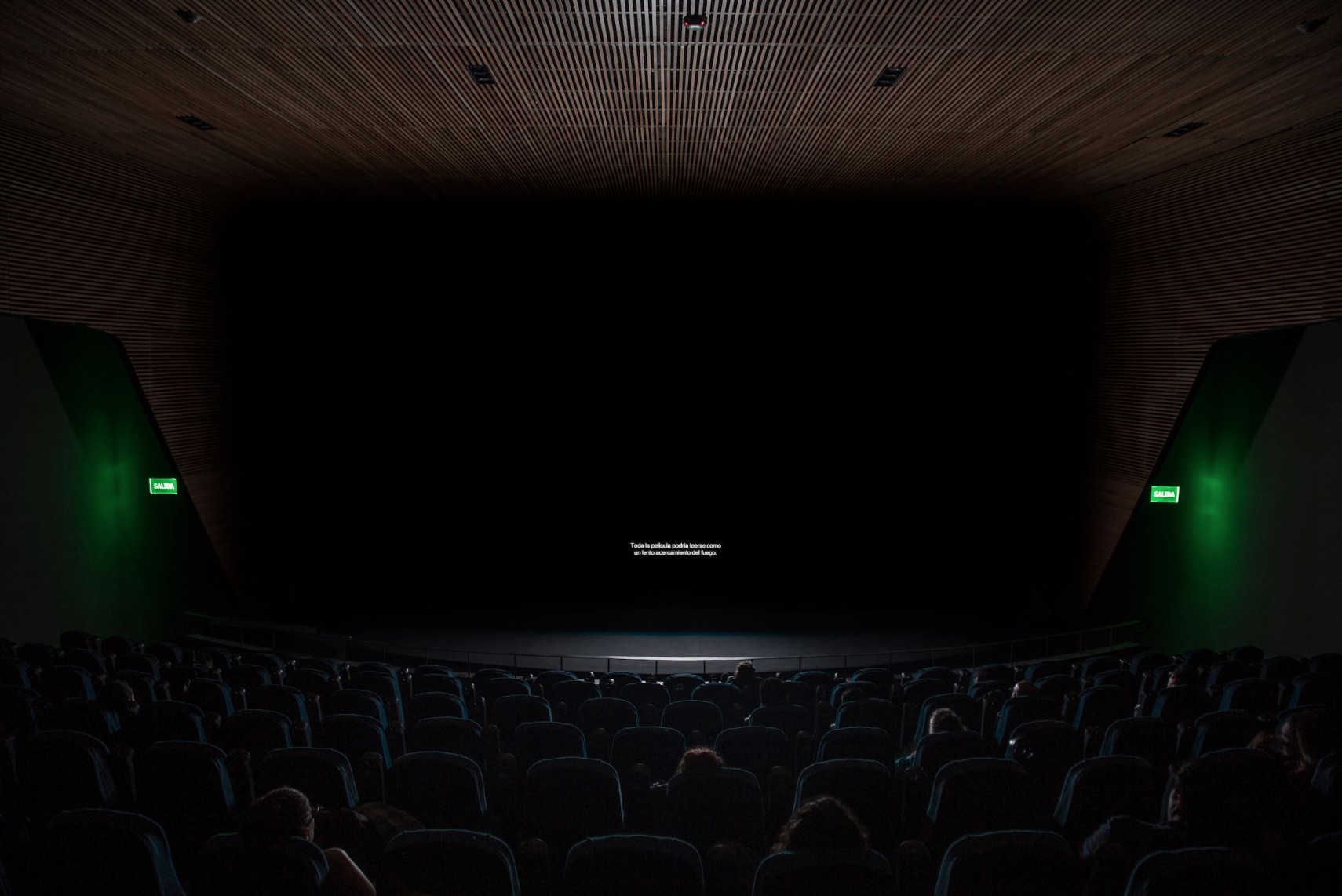
Essay
Close to Dementia and Disaster: Epílogo
by Eric Valencia
Presented by Arteriam
Reading time
6 min
The ultimate in paranoia is not when everyone is against you but when everything is against you. Instead of “My boss is plotting against me,” it would be “My boss’s phone is plotting against me.”
— Philip K. Dick
Epílogo is the first collective exhibition by ARTERIAM.*1 Curated by Mauricio Cortés, the show is located in the upper part of what used to be Casa Mauaad, in Colonia San Rafael. Among the works presented is a painting by Othiana Roffiel titled Como si el tiempo se fracturara y corriera en varias direcciones (“As Though Time Fractured and Ran in Various Directions,” 2020), which could very well function as a description of a phenomenon reverberating throughout the entire exhibition.

Epílogo is to be experienced: if the post(?)-pandemic life constitutes one of its conceptual axes, it does so only tangentially. Or rather, telluricly: it’s made evident by its effects. None of the works explicitly thematizes Covid-19, unless one counts the brief winks by the gallery text: “I am the only one who escaped to tell you” (Job), “after a year of tremendous interruption [...] we assemble, perhaps close to dementia and disaster.”
On the guided tour, Cortés comments: “Each of the works is a tiny convulsion.” I think of the “aura,” a phenomenon that occurs in epileptics and that manifests itself “as a subjective experience (which may be sensory, emotional, autonomic, or cognitive);”*2 that is, a small hallucination that generally announces, to the person suffering it, the possibility of an imminent major attack.
Most of the works were carried out before 2020, but they nevertheless display a certain apocalyptic pathos. Perhaps a way of producing that’s directed toward the future, in the face of a reality beset with dire signs. What is a spell, after all, but a kind of response that we articulate before an omen? And what is an omen, but a vision of things that didn’t have to come together?
In this strange sense, what becomes salient are works like Manada (2019) by Miriam Salado, an installation consisting of eight leather belts, suede thread, and 800 white-tailed deer hooves. Or John Soane Would Approve (2016) and Scorpion House (2016) by Theo Michael, which consist of types of models in which fragments of collapsed cities are joined together and propped up by structures made of small pieces of wood, functioning as possible flotation systems.
Particularly emblematic are the works Remedios (2015) by Elisa Pinto Delgado and MOOD (gray) (2015-21) by Débora Delmar, both located in the last room of the tour. Remedios is a series of silver lithographs, describing a set of procedures for alleviating certain diseases: tie a crab around the neck, make a tea from a dog’s tail, put cow dung on one’s head. The images are appropriated from the book Where There Is No Doctor: A Village Health Care Handbook, exemplifying remedies carried out in “rural Mexico.”[3] “In resorting to a remedy,” reflects Cortés, “you have to be in a situation of maximum vulnerability.” As we examine MOOD (beige)—composed of a 10-liter bottle of Clorox on a circular glass, on a giant teddy bear—the curator recalls the comments made by Donald Trump about the alleged therapeutic possibilities of injecting or ingesting chlorine as a cure for Covid-19. The distinction between spells and remedies is very subtle.
_15_03_07.jpg?alt=media&token=5e2a1209-0fa9-4729-9960-c2db82fb8783)
The show opens with Toda la película podría leerse como un lento acercamiento al fuego (“The Whole Film Could be Read as a Slow Approach to Fire,” 2019) by Daniel Monroy, Cuevas an ink print on cotton paper of a photograph taken at the Cineteca Nacional, during a presentation of Sabemos cómo es el fuego (“We Know What Fire is Like,” 2018), by the same artist. In this latest work, Monroy Cuevas reflects on the film medium in the wake of the fire that occurred at the Cineteca in 1982: the fire invaded one of the room’s screens, onto which was being projected another fire, from the film The Promised Land (Andrzej Wajda, 1975).
For Monroy Cuevas, the moment of the fire’s start, when the real flames coincided with the projected image on the screen, “can be understood as the staging of the most fundamental operation of all time: a splitting of the instant into the future and the past, two heterogeneous directions, one that is thrown into the future and the other that is falling into the past.”*4
In Epílogo, fire and its effects (in time, we now know) constitute another axis of reflection running through several of the works, and belonging to different magnitudes. For example, in Orión (2018) by Emilio Chapela, in which the artist translates the light intensities of the stars making up the titular constellation into ceramic pieces of different colors and firing times, sometimes “exceeding” those times, and thus occasionally producing a bubble-shaped texture. Or Avenida San Bernabé (2011) by Pablo Rasgado: a layer of recovered paint in which there has accumulated, as the technical sheet tells us, “diesel soot, polycyclic aromatic hydrocarbons, brake ware particles, and dirt,” forming an ominous image.

The “predictive” quality of the aura in a person with epilepsy can only be verified retrospectively, that is, once the major seizure has occurred. Only the survivors of the catastrophe can attest to the certainty of the omens. But it also requires a certain quality, a kind of reverse paranoia, in order to reinsert meaning into those messages whose warning content has escaped us. This is a task that Cortés has carried out with precision and that we can experience through the works displayed in Epílogo.
The exhibition can be visited until May 2, after registering at https://www.arteriam.art/
Translated to English by Byron Davies
*1: ARTERIAM is a platform offering different services related to contemporary art, made up of Mauricio Cortés and Rosa María Moyá Vázquez.
*2: https://www.epilepsydiagnosis.org/seizure/sensory-overview.html
*3: Werner, D. (second revised edition 1992) Where There Is No Doctor: A Village Health Care Handbook. United States: Hesperian Health Guides.
Published on April 22 2021